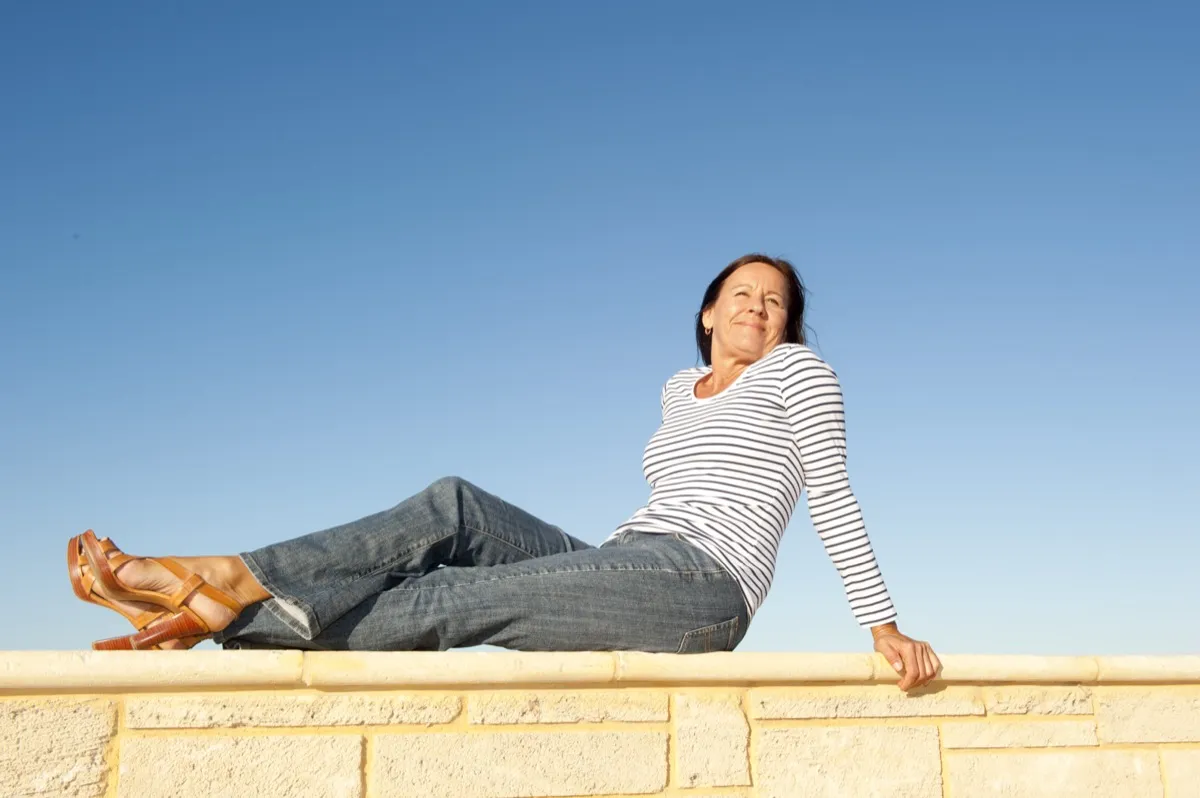4 Types of Sandals You Should Never Wear After 60, Podiatrists and Stylists Say

Summer is fast approaching, and for many of us, that means the return of sandals—pedicures permitting. And while there’s no shortage of open-toed options for summer style, experts say that individuals over the age of 60 should be especially discerning when sandal shopping.
Margaret Trevillion, MSc, a UK-based podiatrist with Walk This Way Podiatry, emphasizes that when it comes to your shoes, it’s important to prioritize comfort, support, and safety as you age. She notes that while personal preferences in footwear may vary, there are certain types of sandals that doctors and stylists will typically recommend avoiding after the age of 60. Read on to find out which types of sandals come with risks that outweigh their rewards, according to experts.
READ THIS NEXT: 8 Retail Brands That Sell the Best Quality Walking Shoes.
1
High-heeled sandals

If there’s one type of sandal you may want to strike from your lineup, it’s high-heels, Trevillion says.
That’s because high heels can place excessive pressure on the feet, leading to discomfort, poor posture, and an increased risk of falls. Trevillion adds that they can also exacerbate existing foot conditions such as arthritis, bunions, corns, calluses, blisters, and more.
“Considering these factors, it is generally recommended for individuals over 60 to prioritize comfort, safety, and foot health by opting for shoes with lower heels or flats that provide better stability, support, and cushioning,” the podiatrist tells Best Life.
Margaret Manning, the founder of the blog Sixty and Me, previously recommended wedges as a “nice and sturdy” option for women over 60.
“You can wear them with dresses, tunics, pants, jeans…whatever you want,” explained Manning. “A light-colored wedge, like a cream or skin color, gives you that beautiful effect, it elongates the leg.”
READ THIS NEXT: Love Walking Around Barefoot Indoors? This Podiatrist Says You Should Stop Now.
2
Flip flops and thong sandals

Trevillion says flip-flops and thong sandals usually provide minimal arch support and offer little protection for the feet—which is why she does not recommend most pairs if you’re in your 60s.
“They can lead to foot pain, blisters, and an increased risk of trips and falls due to their lack of stability,” she explains. “The thin strap between the toes may cause friction, irritation, and potential toe deformities.”
Additionally, Trevillion notes that many people experience unnecessary foot strain while wearing flip-flops since your feet and toes have to work harder to keep your shoes in place.
To protect your feet in the summer, it’s best to find sandals with secure straps, a wide supportive base, and, if possible, memory foam footbeds. “These features can help reduce the impact on joints,” Gregory Alvarez, DPM, a podiatrist at the Ankle & Foot Centers of America, previously explained to Best Life.
As for looking fashionable, Elizabeth Kosich, a certified image stylist and the founder of Elizabeth Kosich Styling, said leather sandals are “classic, elegant, and versatile,” while metallic pairs “are perfect with summer whites on summer nights.”
3
Sandals with minimal cushioning or arch support

Trevillion also warns against any sandal (flip-flops included) that lacks adequate arch support and has thin soles.
“[They] do not provide adequate shock absorption, which can lead to foot pain and discomfort, especially for those with sensitive aging feet which lack fatty padding,” she tells Best Life.
To make matters worse, the natural arches of the feet tend to flatten or weaken as we age. Sandals without proper arch support can exacerbate the problem by straining the feet, ultimately leading to issues like plantar fasciitis, arch pain, and overpronation.
As an easy-breezy alternative, consider Birkenstocks. According to River Podiatry, these popular sandals are “designed with contoured insoles to provide more comfort and have curved foot beds made from cork and rubber for durability and stability.”
For more style and health advice delivered straight to your inbox, sign up for our daily newsletter.
4
Slip-on sandals

Though easy to throw on, these sandals, also known as slides or sliders, can cause problems with your gait and balance.
“Slip-on sandals without any ankle support or straps may increase the risk of instability and falls or trips,” says Trevillion. “They can also contribute to foot fatigue due to the lack of proper support.”
A more secure and feet-friendly option is espadrilles, “the perfect comfy, flexible footwear for backyard parties and BBQs,” petite style coach Angela Foster, previously told Best Life. “Plus, they look amazing with everything from shorts to maxi dresses to summer pants.”